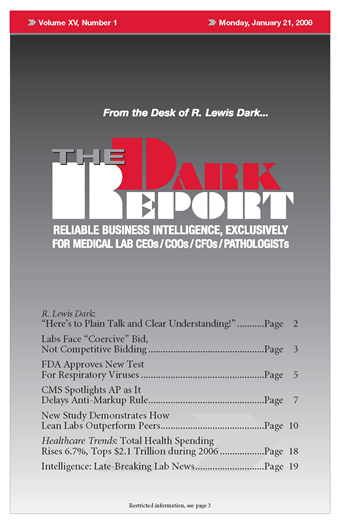HEALTHCARE COSTS totaled $2.1 trillion in 2006, according to the January/ February issue of Health Affairs. That is an increase of 6.7% over total spending in 2005, wrote researchers in an analysis titled “National Health Spending In 2006: A Year Of Change For Prescription Drugs.” Outside of a big, 8.5% jump in spending on prescription …
Total Health Spending Rises 6.7%, Tops $2.1 Trillion during 2006 Read More »
To access this post, you must purchase The Dark Report.


